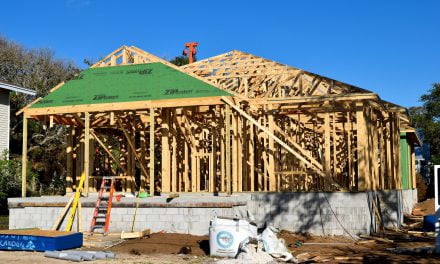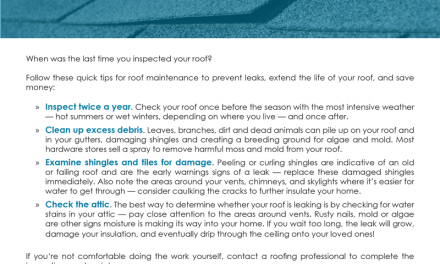What impact will the trending increase in interest rates have on capitalization rates? Total Voters: 35
This article examines today’s capitalization (cap) rates in light of the new era of rising interest rates.
Calculating the cap rate
It’s an easily dispelled myth that rising interest rates impact only homebuyers. Today’s skyrocketing mortgage rates are impacting every corner of the real estate market — including buyers and sellers of commercial and investment property.
In anticipation of rising interest rates, investors adjust their strategies for ensuring their profits and yields continue to support each investment.
The capitalization (cap) rate is the annual rate of return — yield — produced by the operations of an income property, stated as a percentage of invested capital. Initially when a seller’s agent markets an income property for sale, the cap rate is presented as the annual yield from rental operations in relation to the seller’s asking price.
To determine the cap rate, the seller divides the property’s net operating income (NOI) into the asking price. For example, consider a property with an NOI of $75,000. The seller’s asking price is $1.3 million. The property’s cap rate is 5.8% (75,000 / 1,300,000).
Cap rates vary by property
But, what is considered a “good” cap rate, versus a “bad” one?
For purchasers of real estate, the higher the cap rate, the better. This translates to a higher annual yield versus a lower purchase price. Now, the investor needs to ask themselves: is a cap rate of 5.8 a high enough cap rate for the property in question?
In 2022, demand for industrial property remains high compared to, say, retail property. Thus, a purchaser of retail property ought to demand a higher cap rate, while an industrial purchaser will be satisfied with a lower cap rate due to the expectation of steady rent growth and profit.
In other words, an acceptable cap rate is always relative. Each property is unique, varying from buyer to buyer, year to year and even month to month during periods of economic distortion, as during 2022 when interest rates have jumped significantly. In a mortgage market where forward, long-term interest rates will be higher, today’s cap rate needs to reflect this expectation.
If not, the price paid using a cap rate based on today’s (or yesterday’s) historically low interest rates (reflecting low inflation and low real margins) will in real terms produce a long-term loss for the buyer on a resale.
For some historical reference, U.S. commercial real estate (CRE) cap rates most recently peaked around 7.0% in 2007, according to Quantum Real Estate Advisors. During the years heading into 2007, investors began increasing their cap rates in anticipation of the Federal Reserve’s (the Fed’s) rate hike to cool the overheated Millennium Boom economy.
Nationally, the average cap rate for multi-family property declined to 4.6% at the end of 2021, down from 5.3% a year earlier, according to CBRE. In the Pacific West region, which includes California, the multi-family cap rate was even lower, at 3.9% in Q4 2021, down from 4.5% a year earlier.
These declining cap rates reflect both increased multi-family rental demand, and also the higher investor interest in real estate during the rocky economic times of 2020-2021. Many investors have come to see real estate as a “sure thing” compared to the volatile stock market and the low returns offered by Treasury Securities.
However, cap rates going forward will need to rise as they track increases in both mortgage interest rates and the demand for money as the economy moves on from the next recession – anticipated to arrive heading into 2023.
Related article:
Can the Fed cool inflation without implementing another recession?
Measuring risk in the cap rate
Cap rates need to rise with higher interest rates due to:
- the increased risk of loss associated with rising interest rates; and
- the increased reliance on annual income — yield — rather than a reliance on a one-time sale profit.
Large-scale property investors work with the Value at Risk (VaR) principle, which measures the amount of monetary loss possible within a specific investment or portfolio of investments. This helps investors choose which properties will meet their investment goals, while also ensuring they maintain sufficient reserves to cover any potential losses.
The prudent investor examines each property’s cap rate with this risk in mind. Properties with higher levels of risk demand higher cap rates, to ensure the NOI is sufficient to cover the VaR.
There are two types of risk to consider when determining the risk premium rate to be included in cap rates:
- risks inherent in the property, including:
- depreciation; and
- risks due to human and other exterior elements, including:
- the creditworthiness of current tenants;
- the coming expiration of current leases;
- competition from nearby, similar property (existing and future construction);
- a history of crime committed on or near the property;
- long-term income and wealth changes in the area surrounding the property; and
- changes in zoning, retrofitting, habitability and fire ordinances or regulations.
However, today’s investors also need to weigh the risk of other investors defaulting on nearby properties, dragging down their own property values. That’s because today’s rising interest rates herald an economic downturn, the second act to the 2020 recession.
When interest rates consistently rise, price increases will slow and higher cap rates will be needed to ensure yields remain sufficient to cover these losses. Without a high cap rate, mortgaged property owners will be unable to cover even needed maintenance and updates to remain competitive in the future.
Real estate agents and brokers can help by educating their investor clients — especially those who are relatively new to property investment — on the importance of cap rates.
Related article:














